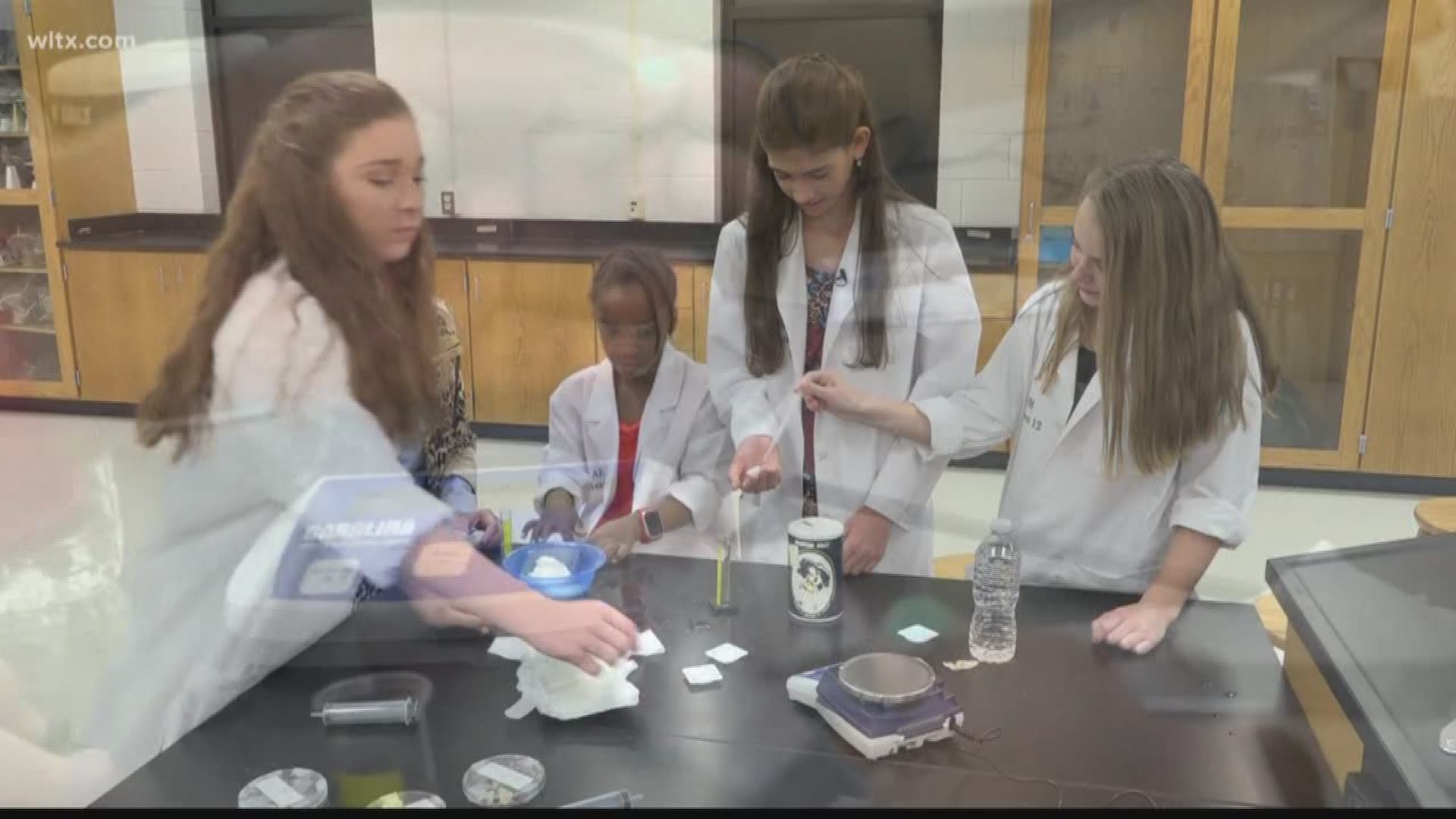Alice Drive Middle School is located in the relatively small town of Sumter. And here they're doing big things--huge in fact, and leading the way to the future of our education system.
"We started doing professional development, talking to teachers. The buy-in was here. Everybody started jumping on board," says Stephanie Barrineau, curriculum coordinator at Alice Drive Middle School.
Three years ago, the school decided that the S.T.E.M. program, meaning Science, Technology, Engineering, Mathematics, was the direction they wanted to go.
Barrineau says, "We started working on what S.T.E.M. would look like at Alice Drive Middle School with no guidance because there was no other nationally certified S.T.E.M. school in our state at that time."
Because of that choice, and the school headlong dive into the program, four, sixth-grade girls have their sights set on going into outer space. Well, their experiment anyway. But before that, they are tasked with the challenge of finding an experiment that will not only pass strict NASA guidelines, but also be a legitimate scientific discovery, something that could be studied in micro-gravity. In other words, design something that could be used outside of earth's atmosphere. And that's just what they did.
"We just wanted to see what it would do in space," says Alyse King. She is one of the sixth graders to work on a proposal. The three others are Mary Brooke Mooneyham, Alana Garrick, and Ashlin Farmer.
An interesting thing about the minds of our youth, is that they haven't been told what can't be done yet. They haven't stopped using their imagination to explore possibilities, and sometimes what generates in the imagination, becomes entirely possible.
Alyse says, "We found this material found in baby diapers, which was sodium polyacrylate. and we found out that it absorbs temperature."
So the group set out to use this information in order find a practical application. How could this diaper material be used in space?
Barrneau says, "It's really difficult because this whole things has to do with the effects of micro-gravity. So when you're thinking about this experiment, you have to think ok, well, it's got to start in space and it's got to end in space. Otherwise, when it comes back down, gravity is gonna cause it to react."
As it turns out, since this diaper material expands, and reacts to water and temperature, it works great for seed germination, which means the start of growing a plant, and possibly as a soil substitute.
"When it blows up it holds that water, and then that moisture comes out and goes into the seeds and roots," explains Barrineau.
As a result of this simple idea, the group of four young ladies has won their spot of getting their experiment on the International Space Station. They are one of just 31 spots submitted from all over the United States, Canada and Brazil.
Barrineau says, "When the tube comes back to us, we can look at it through microscopes if need be, and if any germination happened, we know that the water reacted to the sodium polyacrylate in space."
They say goes that "without risk, there's no reward," Alice Drive Middle School took a risk, with little or no knowledge of the S.T.E.M. program. They worked hard, and now, just three years in, they're seeing the reward in the form of four young girls, sixth graders, showing of their mental strength by putting a simple idea, out into the stars.
Barrineau says, "It's showing these little girls, and everyone else in this school, dream big. Because anything can happen. If we can send an experiment to space from Sumter, South Carolina and Alice Drive Middle School, then they can do anything they want to do."
The experiment is tentatively set to go to the space station on June 18, 2018, but that date can be changed depending on conditions. The launch will be at the Kennedy Space Center in Florida.

